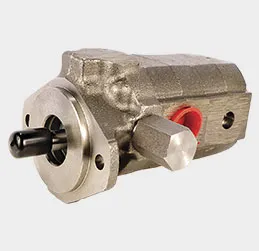Sand Casting Techniques for Aluminum Parts Manufacturing and Their Benefits
The Significance of Sand Cast Aluminum in Modern Manufacturing
Sand casting is one of the oldest and most established metal forming processes, particularly when it comes to aluminum alloys. This method has been widely adopted across various industries due to its cost-effectiveness, versatility, and the high-quality results it can produce. In this article, we will explore the fundamental aspects of sand cast aluminum, its advantages, applications, and its continuing relevance in today’s manufacturing landscape.
What is Sand Casting?
Sand casting is a casting process that involves creating a mold from a sand mixture. This mold is then used to shape molten metal into desired forms. The primary materials for sand casting include sand, a binding agent (such as clay or resin), and water. The combination of these materials creates a mold that can withstand high temperatures and provide detailed features.
Specifically, sand cast aluminum involves pouring molten aluminum into these molds, which hardens into the final product upon cooling. Aluminum is chosen for its properties such as low density, excellent corrosion resistance, and high thermal conductivity, making it an ideal candidate for various applications.
Advantages of Sand Cast Aluminum
1. Cost-Effectiveness One of the most significant advantages of sand casting is its lower cost compared to other casting methods, especially for small production runs. The materials used are inexpensive, and the process can be carried out with minimal equipment.
2. Complex Shapes Sand casting allows for greater design flexibility. The sand mold can be formed into intricate geometrical shapes that may be difficult or impossible to achieve with other manufacturing processes. This capability is crucial for the aerospace and automotive industries, where complex engine components may be required.
3. Scalability Sand casting is scalable, meaning that it is suitable for both small and large quantities of parts. This adaptability makes it an excellent option for prototyping and low to medium volume production.
4. Compatibility Aluminum alloys can be sand cast with various other metals, offering manufacturers the ability to tailor material properties for specific applications. This versatility is beneficial in industries where material performance is critical.
sand cast aluminum

5. Recyclability Aluminum is a recyclable material, and sand casting processes generate minimal waste, making it an environmentally friendly option. The ability to reuse sand molds also contributes to the sustainability of this method.
Applications of Sand Cast Aluminum
Sand cast aluminum is utilized in an array of applications spanning numerous industries. In the automotive sector, components such as engine blocks, transmission housings, and structural elements are commonly produced using this method. The lightweight nature of aluminum aids fuel efficiency, making these components particularly advantageous.
In the aerospace industry, where weight savings are paramount, sand cast aluminum parts are used in aircraft structures and engine components, contributing to the overall performance and efficiency of flying vehicles.
Other notable applications include construction materials, marine parts, and consumer goods such as cookware and appliances. The precision and detail achievable with sand cast aluminum make it a preferred choice for many high-demand applications.
The Future of Sand Cast Aluminum
As technology advances, sand casting continues to evolve. Innovations such as 3D printing are increasingly being integrated into the sand casting process, allowing for the rapid production of molds and more complex designs. This integration is poised to enhance customization and reduce lead times significantly.
Furthermore, the demand for lightweight materials due to the global push for fuel efficiency in vehicles and aircraft suggests a bright future for sand cast aluminum. The growing need for sustainable manufacturing practices also aligns well with the inherent recyclability and low waste generation of sand casting.
Conclusion
Sand cast aluminum represents a critical link between traditional manufacturing techniques and modern industrial needs. Its advantages of cost-effectiveness, flexibility, and scalability make it an essential method in the production of high-quality aluminum parts. As industries continue to innovate and seek sustainable solutions, sand casting will likely maintain its place as a foundational process in manufacturing, adapting to meet the challenges and demands of the future.
-
Technocrats Die Casting Solutions – Precision Hot & Cold Chamber Die Casting ExpertsNewsJun.24,2025
-
Precision Glass Machining Solutions Sand Casting Glass & Abrasive Water Jet Machining ExpertsNewsJun.24,2025
-
Top Extras Casting Solutions Die Casting and Sand Casting Experts High-Quality Casting and Die Casting ServicesNewsJun.10,2025
-
Top SS Casting Manufacturer Aluminum Die Casting Manufacturer China Precision Die Casting Company SupplierNewsJun.10,2025
-
High-Quality Brass Casting Sand for Precision Sand Casting Brass at HomeNewsJun.10,2025
-
Affordable Aluminum Sand Casting Solutions Custom PartsNewsJun.09,2025















